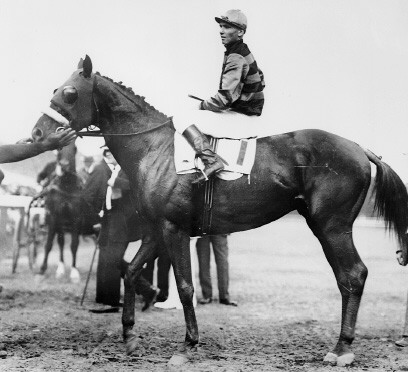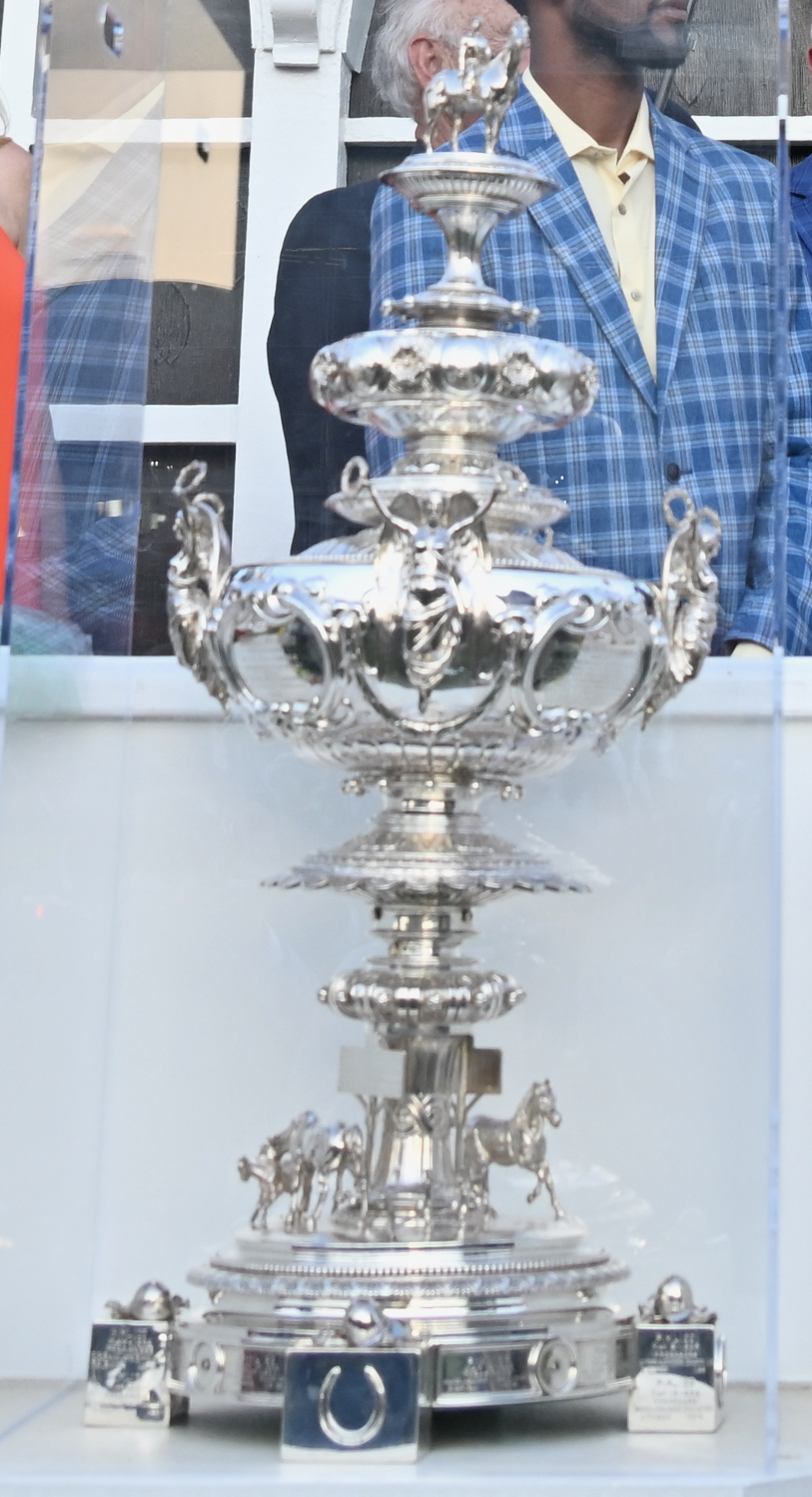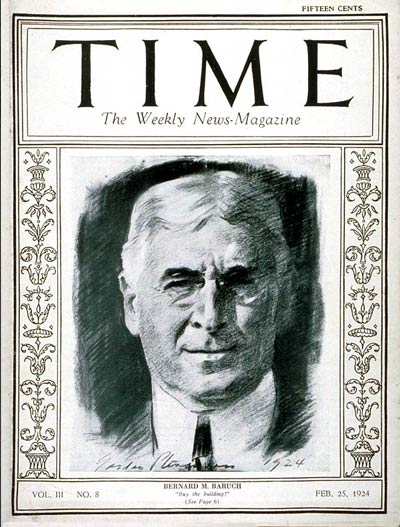|
1928 Preakness Stakes
The 1928 Preakness Stakes was the 53rd running of the Preakness. The race took place on Friday, May 11, 1928, eight days before the Kentucky Derby making it the first leg of the U.S. Triple Crown series. A horse race for three-year-old thoroughbreds, it carried a total purse of $71,370. It was run on a track rated fast in a final time of 2:00. Ridden by future U.S. Racing Hall of Fame inductee Raymond Workman, Victorian won the race by a nose over runner-up Toro. Nassak, the betting favorite from the powerful Rancocas Stable finished a distant 11th. The fifth-place finisher, Sun Beau, went on to a brilliant racing career and was voted U.S. Champion Older Horse in three straight years culminating with his 1996 induction into the U.S. National Museum of Racing and Hall of Fame. No Triple Crown attempt The owners of the Preakness winner chose not to send the colt to Louisville, Kentucky to compete in the May 19th Kentucky Derby. The ''Daily Racing Form'' reported that Victorian's ... [...More Info...] [...Related Items...] OR: [Wikipedia] [Google] [Baidu] |
Preakness Stakes
The Preakness Stakes is an American thoroughbred horse race held on Armed Forces Day which is also the third Saturday in May each year at Pimlico Race Course in Baltimore, Maryland. It is a Grade I race run over a distance of 9.5 furlongs () on dirt. Colts and geldings carry ; fillies . It is the second jewel of the Triple Crown, held two weeks after the Kentucky Derby and three weeks before the Belmont Stakes. First run in 1873, the Preakness Stakes was named by a former Maryland governor after the colt who won the first Dinner Party Stakes at Pimlico. The race has been termed "The Run for the Black-Eyed Susans" because a blanket of Maryland's state flower is placed across the withers of the winning colt or filly. Attendance at the Preakness Stakes ranks second in North America among equestrian events, surpassed only by the Kentucky Derby. History Two years before the Kentucky Derby was run for the first time, Pimlico introduced its new stakes race for three-year-olds, the ... [...More Info...] [...Related Items...] OR: [Wikipedia] [Google] [Baidu] |
Louisville, Kentucky
Louisville ( , , ) is the largest city in the Commonwealth of Kentucky and the 28th most-populous city in the United States. Louisville is the historical seat and, since 2003, the nominal seat of Jefferson County, on the Indiana border. Named after King Louis XVI of France, Louisville was founded in 1778 by George Rogers Clark, making it one of the oldest cities west of the Appalachians. With nearby Falls of the Ohio as the only major obstruction to river traffic between the upper Ohio River and the Gulf of Mexico, the settlement first grew as a portage site. It was the founding city of the Louisville and Nashville Railroad, which grew into a system across 13 states. Today, the city is known as the home of boxer Muhammad Ali, the Kentucky Derby, Kentucky Fried Chicken, the University of Louisville and its Cardinals, Louisville Slugger baseball bats, and three of Kentucky's six ''Fortune'' 500 companies: Humana, Kindred Healthcare, and Yum! Brands. Muhamm ... [...More Info...] [...Related Items...] OR: [Wikipedia] [Google] [Baidu] |
Woodlawn Vase
The Woodlawn Vase is an American trophy given annually to the winning owner of the Preakness Stakes at Pimlico Race Course in Baltimore, Maryland. Overview of the trophy After the Preakness Stakes is run each year on the third Saturday of May, the winners are awarded the Woodlawn Vase on national television. The vase was first awarded in 1861 to a stakes-winning mare named Mollie Jackson in Louisville, Kentucky. In 1917, the Woodlawn Vase became the official trophy for the winner of the second jewel of the Triple Crown and was awarded to the Preakness winner Kalitan. For many years the trophy was given to the winning owner to keep for one year until the next running of the race. In 1953, Native Dancer won the Preakness Stakes and the wife of winning owner Alfred Gwynne Vanderbilt Jr. (Jeanne Murray Vanderbilt) declined to take annual possession of the trophy because of its monetary and sentimental value to the sport. Following 1953, the winning owner of the horse that won The P ... [...More Info...] [...Related Items...] OR: [Wikipedia] [Google] [Baidu] |
Albert Ritchie
Albert Cabell Ritchie (August 29, 1876 – February 24, 1936) was an American lawyer and politician. A Democrat, he was the 49th governor of Maryland from 1920 to 1935. Ritchie was a conservative who campaigned for, but did not win, the presidential nomination in both 1924 and 1932. As of 2020, Ritchie is the state's longest-serving governor, with almost 15 years of service (14 years, 11 months, and 27 days) and a record four terms. Ritchie has the eighth-longest gubernatorial tenure in post-Constitutional U.S. history at days. Biography Early life and family Albert Ritchie was born on August 29, 1876, in Richmond, Virginia, to relatively distinguished parents. His father, Albert, had served as a member of the Maryland Constitutional Convention in 1867, as a professor of law at the University of Maryland, as city solicitor of Baltimore, Maryland, and as a judge. His mother, Elizabeth Caskie Cabell, was a granddaughter of William H. Cabell, a governor of Virginia, and related to ... [...More Info...] [...Related Items...] OR: [Wikipedia] [Google] [Baidu] |
Governor Of Maryland
The Governor of the State of Maryland is the head of government of Maryland, and is the commander-in-chief of the state's National Guard units. The Governor is the highest-ranking official in the state and has a broad range of appointive powers in both the state and local governments, as specified by the Maryland Constitution (1867, and revisions/amendments). Because of the extent of these constitutional powers, the Governor of Maryland has been ranked as being among the most powerful governors in the United States. The current Governor is Larry Hogan, a Republican who has been in office since 2015. He will be succeeded by Wes Moore, a Democrat who will take office on January 18, 2023. Selection and qualifications Like most state chief executives in the United States, the Governor is elected by the citizens of Maryland to serve a four-year term. Under the Constitution of Maryland, the Governor can run any number of times, but not more than twice in a row. This makes it possi ... [...More Info...] [...Related Items...] OR: [Wikipedia] [Google] [Baidu] |
Bernard Baruch
Bernard Mannes Baruch (August 19, 1870 – June 20, 1965) was an American financier and statesman. After amassing a fortune on the New York Stock Exchange, he impressed President Woodrow Wilson by managing the nation's economic mobilization in World War I as chairman of the War Industries Board. He advised Wilson during the Paris Peace Conference. He made another fortune in the postwar bull market, but foresaw the Wall Street crash and sold out well in advance. In World War II, he became a close advisor to President Roosevelt on the role of industry in war supply, and he was credited with greatly shortening the production time for tanks and aircraft. Later he helped to develop rehabilitation programs for injured servicemen. In 1946, he was the United States representative to the United Nations Atomic Energy Commission (UNAEC), though his Baruch Plan for international control of atomic energy was rejected by the Soviet Union. Early life and education Bernard Baruch was born t ... [...More Info...] [...Related Items...] OR: [Wikipedia] [Google] [Baidu] |
Esmé Howard, 1st Baron Howard Of Penrith
Esmé William Howard, 1st Baron Howard of Penrith, (15 September 1863 – 1 August 1939) was a British diplomat. He served as British Ambassador to the United States between 1924 and 1930. He was one of Britain's most influential diplomats of the early part of the twentieth century. With a gift for languages and a skilled diplomat, Howard is described in his biography as an integral member of the small group of men who made and implemented British foreign policy between 1900 and 1930, a critical transitional period in Britain's history as a world power. Early life Howard was born on 15 September 1863 at Greystoke Castle, near Penrith, Cumberland. He was the youngest son of the former Charlotte Caroline Georgina Long and Henry Howard, an MP for Steyning and New Shoreham. He was the nephew of Henrietta Anna Molyneux-Howard, wife of Henry Herbert, 3rd Earl of Carnarvon. His elder brothers were Henry Howard, an MP for Penrith, and Sir Stafford Howard, an MP for Thornbur ... [...More Info...] [...Related Items...] OR: [Wikipedia] [Google] [Baidu] |
List Of Ambassadors Of The United Kingdom To The United States
The British Ambassador to the United States is in charge of the Embassy of the United Kingdom, Washington, D.C., British Embassy, Washington, D.C., the United Kingdom's diplomatic mission to the United States. The official title is His Majesty's Ambassador to the United States of America. The British Ambassador's residence in Washington, D.C., ambassador's residence is on Massachusetts Avenue (Washington, D.C.), Massachusetts Avenue in Washington, D.C. It was designed by Sir Edwin Lutyens and built in 1928. Duties The position of ambassador to the United States is considered to be one of the most important and prestigious posts in His Majesty's Diplomatic Service, along with that of Permanent Under-Secretary of State for Foreign Affairs, Permanent Under-Secretary of State at the Foreign, Commonwealth and Development Office, Foreign and Commonwealth Office. The ambassador's main duty is to present British policies to the American government and people, and to report American ... [...More Info...] [...Related Items...] OR: [Wikipedia] [Google] [Baidu] |
John F
John is a common English name and surname: * John (given name) * John (surname) John may also refer to: New Testament Works * Gospel of John, a title often shortened to John * First Epistle of John, often shortened to 1 John * Second Epistle of John, often shortened to 2 John * Third Epistle of John, often shortened to 3 John People * John the Baptist (died c. AD 30), regarded as a prophet and the forerunner of Jesus Christ * John the Apostle (lived c. AD 30), one of the twelve apostles of Jesus * John the Evangelist, assigned author of the Fourth Gospel, once identified with the Apostle * John of Patmos, also known as John the Divine or John the Revelator, the author of the Book of Revelation, once identified with the Apostle * John the Presbyter, a figure either identified with or distinguished from the Apostle, the Evangelist and John of Patmos Other people with the given name Religious figures * John, father of Andrew the Apostle and Saint Peter * Pope Jo ... [...More Info...] [...Related Items...] OR: [Wikipedia] [Google] [Baidu] |
Joseph P
Joseph is a common male given name, derived from the Hebrew Yosef (יוֹסֵף). "Joseph" is used, along with "Josef", mostly in English, French and partially German languages. This spelling is also found as a variant in the languages of the modern-day Nordic countries. In Portuguese and Spanish, the name is "José". In Arabic, including in the Quran, the name is spelled '' Yūsuf''. In Persian, the name is "Yousef". The name has enjoyed significant popularity in its many forms in numerous countries, and ''Joseph'' was one of the two names, along with ''Robert'', to have remained in the top 10 boys' names list in the US from 1925 to 1972. It is especially common in contemporary Israel, as either "Yossi" or "Yossef", and in Italy, where the name "Giuseppe" was the most common male name in the 20th century. In the first century CE, Joseph was the second most popular male name for Palestine Jews. In the Book of Genesis Joseph is Jacob's eleventh son and Rachel's first son, and k ... [...More Info...] [...Related Items...] OR: [Wikipedia] [Google] [Baidu] |
Ernest, 10th Prince Of Ligne
Prince of Ligne is a title of Belgian nobility that belongs to the House of Ligne, which goes back to the eleventh century. It owes its name to the village in which it originated, between Ath and Tournai. The lords of Ligne belonged to the entourage of the Count of Hainaut at the time of the Crusades. The Ligne family began a progressive rise in the nobility, first as barons in the twelfth century, then counts of Fauquemberg and princes of Épinoy in the sixteenth century. Lamoral I received the titles of Prince of Ligne and Prince of the Holy Roman Empire in the early seventeenth century from Emperor Rudolf II. The Princes of Ligne are also Grandees of Spain, but this dignity is held personally rather than in conjunction with the title. Barons de Ligne * ''Jean II'', Baron of Ligne and Brabançon, Lord of Beloeil (died 1442) ** Jean III, Baron of Ligne 1442–1469 (died 1469) *** Jean IV, Baron of Ligne, Lord of Roubaix 1469–1491 (died 1491) **** Antoine I, Baron of Li ... [...More Info...] [...Related Items...] OR: [Wikipedia] [Google] [Baidu] |


.jpg)
.jpeg)

